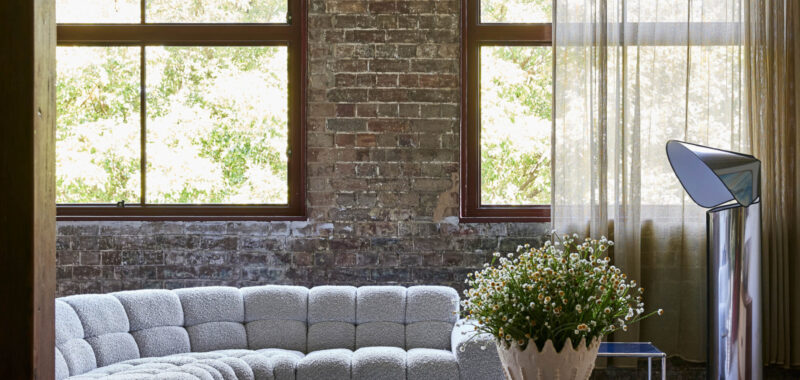Principal of Studio Noakes Genine Noakes always loved the original architecture of The Watertower — just not the previous updates made to her client’s apartment in the building.
Originally a shoe factory, the Redfern building was first constructed in 1903, and became a converted warehouse development in 1984 after years of designing by architect Peter Mulroney.
It was this history that the apartment owner and Genine were attracted to, but which had had been obscured by unsympathetic updates — think a black painted ceiling, black bathroom, red powder room, and red carpet.
Studio Noakes’ job was to reinstate the apartment’s character while injecting colour, art, and personality reflective of the owner’s taste.
To reveal the apartment’s bones, the internal brick walls were acid washed, and a dark mahogany stain was sanded off the floors, columns, and rafters to reveal the original blackbutt timber.
Inspiration for the new interior palette came from the client’s extensive art collection, and references combining the ‘simple and functional elements of mid-century design’, the more ‘eccentric and futuristic elements of the 70s and 80s’, and the vibe of New York loft warehouses.
Central to the apartment is the new kitchen, punctuated by the playful lightness of Dulux Oxford Half and elevated tempest quartzite.
Exposed clay bricks inspired a moodier scheme in the bedrooms and bathrooms, that showcase rosso levanto and rosso orobico marbles, with spotted gum timber joinery.
Subtle texture is also introduced through Venetian plaster on the main bedroom wall, and blush micro cement in the main bathroom.
Throughout the apartment, spaces are layered with books, art, and a combination of textured contemporary and classic furniture pieces. These items are a nod to the apartment’s industrial and residential past, and its future as a stylish and artful home.
Once a dark home that had lost its way, this apartment is now a warm and wonderful abode that is simultaneously unique to the owner, and faithful to the building’s origins.

